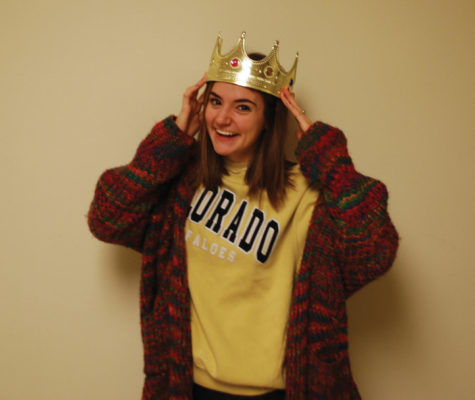Reason behind scary clown phenomenon
November 1, 2017
This year, Andy Muschiett’s film adaptation of Stephen King’s novel “It” surpassed “The Exorcist” as the highest grossing horror movie of all time—a record that has been held since 1973. The movie, which is a remake of the 1990 mini-series with the same title is based off of Stephen King’s 1986 novel. Pennywise, the shapeshifting, demon, killer clown and antagonist of the movie, is featured as he terrorizes a group of young children known as the “Losers’ Club.”
Last fall, clown sightings swept the nation, with videos and pictures of the eerie gatherings gaining popularity on various social media platforms. Clown spottings were noted in 20 states. Some videos showed clowns chasing after cars, hikers and bikers, sometimes with knives or other weapons. In other cases, a clown stood in the middle of a country road, not moving, but terrifying nonetheless.
Why is our culture so enraptured by this fear of clowns? Why has something that was once associated with practical jokes and children’s parties become demonized? And why is our society so obsessed with this alter ego that clowns have taken on?
The clown persona, characterized by mischief and practical jokes, has been a part of our society much longer than its scary counterpart. From court jesters in medieval Europe to Bozo the Clown on Channel 9, clowns have been a part of society for. But when did they become scary?
One of the earliest records of clowns being depicted as frightening is in Charles Dickens’ “The Pickwick Papers”, where he describes a clown as “deformed,” with “glassy eyes” and “long skinny hands”. But even this “scary” depiction is nothing compared to the depiction of the evil clown, Pennywise, who terrifies children in both adaptations of Stephen King’s “It”.
Perhaps the mystery of who is really behind the face paint is what feeds our fear. The fact that anyone—regardless of their intentions—can put on face paint, big shoes and a silly costume distracts us from what is supposed to be a fun source of entertainment. The ambiguity and uncertainty of who the clown really is adds to our fear regarding their alter ego. Take for example Pogo the Clown, who entertained many children and families in his Chicago neighborhood throughout the 1970s…until he was arrested for murder. Otherwise known as John Wayne Gacy, Pogo the Clown was found guilty of slaughtering more than 30 young boys.
Baby Boomers see clowns as comical, while Millennials see clowns as scary. Gacy’s fault? Stephen King’s fault? Or is it really the fault of a society that is now immune to what was frightening in the past? Maybe we’ve grown immune to demons and ghosts in movies because of clichés and overused tropes. Maybe clowns create a sense of fear that we’re not used to.
We have all gone to the circus, we have all interacted with clowns, and the thought of those same people we thought of as silly when we were kids being capable of gruesome murder creates fear on a level that something like ghosts cannot generate. But maybe, our society has become so desensitized to what previous generations found scary that we need to seek out new sources of fear, to feel the same things.





















![Movie poster for '[Rec]" (2007).](https://www.lionnewspaper.com/wp-content/uploads/2023/04/rec-640x900.jpg)


